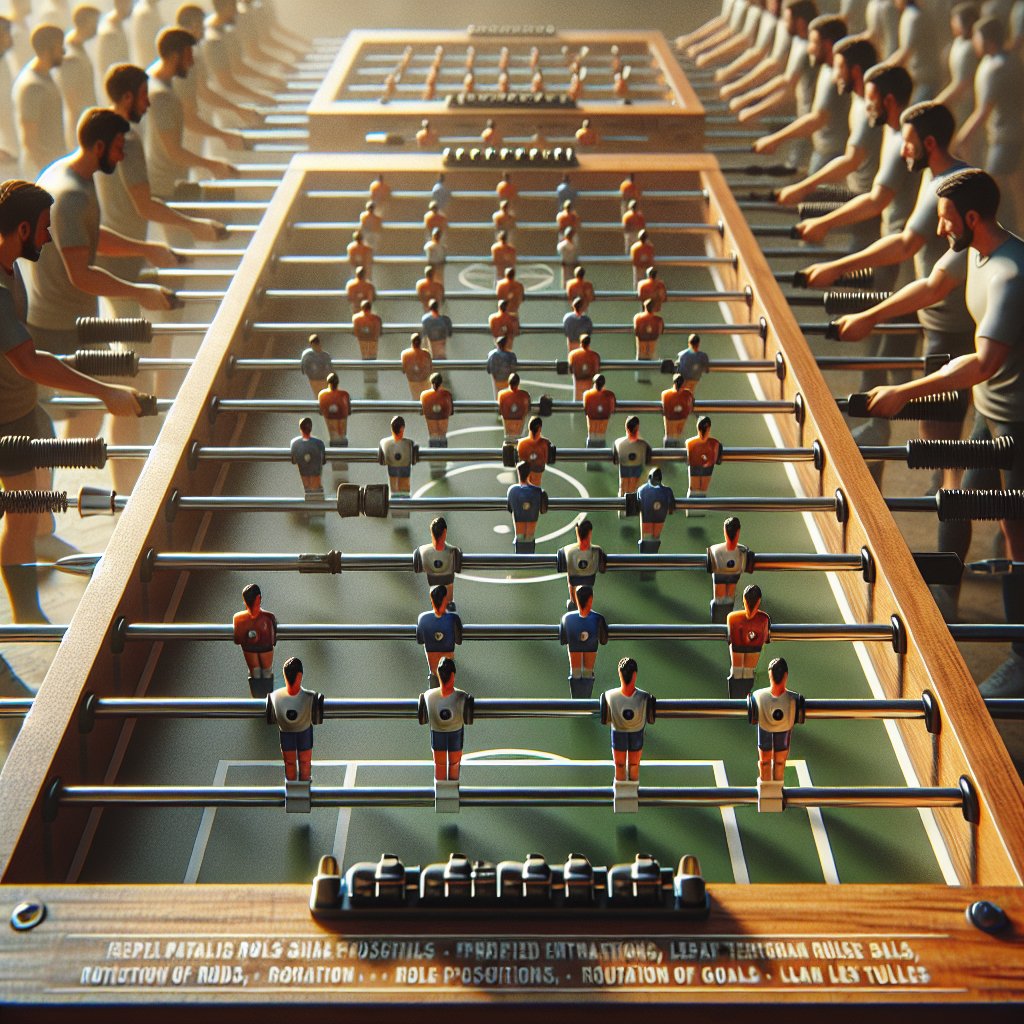Basic Darts Rules
To play darts like a pro, it’s essential to understand the basic rules of the game. This section will cover the dartboard setup and regulation distances that are commonly followed.
Dartboard Setup
A standard dartboard should be positioned so that the bull’s eye is 5 feet 8 inches above the floor. The dartboard should be securely mounted on a wall or a sturdy dartboard stand, ensuring that it is level and stable. The bull’s eye, also known as the center of the dartboard, should be at eye level for the players.
Regulation Distances
To maintain fairness and consistency in the game, there are regulation distances that players should adhere to.
For steel tip darts:
- The distance from the face of the dartboard to the throwing line, also known as the oche, is 7 feet 9-1/4 inches.
For soft tip darts:
- The distance from the face of the dartboard to the throwing line is 8 feet.
These distances are recognized internationally and are commonly used in tournaments. However, in non-tournament matches, it is common for players to round off the distances.
It’s important to note that different organizations and leagues may have their own specific rules and regulations regarding dartboard setup and distances. It’s always a good idea to familiarize yourself with the rules of the specific league or tournament you are participating in.
By understanding the dartboard setup and regulation distances, you can ensure a fair and consistent game of darts. Now that you have a grasp of the basic rules, let’s explore popular darts games in the next section.
Popular Darts Games
Darts is a game that offers a variety of exciting gameplay options. Whether you’re playing with friends or participating in a tournament, exploring different darts games can add depth and enjoyment to your dart-playing experience. Here are four popular darts games to try:
301
In the game of 301, each player or team starts with 301 points, and the objective is to reach zero by subtracting the amount scored in a turn from the remaining number. Players must “double in” and “double out,” meaning they need to hit a double to start the game and finish it. Going over the score will result in being “busted” and the turn ending without any points being deducted. The first player or team to reach exactly zero wins. For a more detailed explanation of the rules, check out our article on darts rules.
Round the World
Round the World, also known as Round the Board or Round the Clock, is a game that tests precision and accuracy. The objective is to be the first player to hit every number on the board in sequence from 1-20. Players take turns throwing three darts at each number, and any part of the number—single, double, or triple—counts. The numbers must be hit in order to advance to the next. The first player to hit 20 wins the game. For more information on this game and other darts game rules, visit our article on darts game rules.
Cricket
Cricket is a strategic and competitive darts game where players aim to “close” specific numbers on the dartboard and accumulate the highest point score. The numbers 15 through 20 and the bullseye are the target areas. To close a number, a player or team needs to score three of that number—either three singles, a single and a double, or a triple. Once a number is closed, subsequent hits on that number accumulate points. The player or team that closes all the innings first and has the most points wins. For a more comprehensive understanding of the rules, take a look at our article on cricket darts rules.
Killer
Killer is a thrilling game that tests accuracy and strategy. In this game, players aim to hit the double of their own number to become a “killer.” Once a player is a killer, they can target doubles of opponents’ numbers. Each player starts with three lives, and hitting an opponent’s double makes them lose a life. The last player standing with at least one life remaining is the winner. For more details on the rules and variations of this game, check out our article on darts rules and regulations.
These popular darts games provide a range of challenges and excitement for players of all skill levels. Whether you prefer the strategic gameplay of Cricket or the quick math calculations of 301, exploring different darts games can enhance your darts-playing experience and help you sharpen your skills. Give these games a try and discover the joy of playing darts like a pro!
Understanding Darts Equipment
To play darts like a pro, it’s important to understand the different components of a dart and how they can impact your game. The key elements of a dart include the barrel, flight, shaft, and tip. Let’s explore each of these components in detail.
Parts of a Dart
Darts consist of four main parts: the barrel, flight, shaft, and tip. These parts can be interchanged based on personal preferences and play style. It is recommended to experiment and combine your favorite parts to create personalized darts that suit your throwing technique and grip style (DARTSLIVE).
Choosing the Right Barrel
The barrel is considered the most crucial part of the dart as it determines the center of gravity and weight distribution. When choosing a barrel, two common materials are available: brass and tungsten. Brass barrels are suitable for beginners due to their affordability and wider variety of designs. On the other hand, tungsten barrels are recommended for medium-level players and above. Tungsten darts are known for their strength, thinness, and heaviness, allowing for tighter groupings and improved accuracy (DARTSLIVE).
Selecting Flights and Shafts
Flights and shafts are essential for stabilizing the dart during flight and adjusting the overall length and weight of the dart, respectively. Flights come in various sizes and shapes, and they play a crucial role in the stability and trajectory of the dart. Larger flights are recommended for beginners as they provide increased air resistance, making it easier to throw darts in a stable manner. Smaller flights are suitable for medium-level players and above, especially when aiming for precise throws or specific points (DARTSLIVE).
Shafts, on the other hand, are used to customize the length and weight of the dart. Longer shafts provide more stability and allow for easier throws without the need for excessive force. Shorter shafts, on the other hand, enable stronger, sharper throws. Shafts come in different sizes such as medium, long, short, and extra short, each with various designs and color variations (DARTSLIVE).
Understanding the different components of a dart and how they interact with each other is crucial for finding the right combination that suits your playing style. Experiment with different barrels, flights, and shafts to discover the setup that feels most comfortable and enhances your throwing accuracy.
Now that you understand the equipment, let’s move on to the next section: Improving Your Dart Skills. Here, we will explore effective practice techniques, grip and stance tips, and how to develop a consistent throwing motion.
Improving Your Dart Skills
To play darts like a pro, it’s important to continuously work on improving your dart skills. This section will cover effective practice techniques, grip and stance tips, and developing your throw.
Effective Practice Techniques
Improving your dart skills requires focused and effective practice techniques. Here are some strategies to maximize your practice sessions:
-
Focus on specific areas: Identify areas of weakness in your game and dedicate practice time to improving those aspects. Whether it’s accuracy, consistency, or a specific darting technique, targeting specific areas will help you make noticeable progress.
-
Set achievable goals: Set realistic and achievable goals for each practice session. This could be hitting a certain number of points or improving your accuracy on a particular target. By setting goals, you can track your progress and stay motivated.
-
Maintain a positive mindset: Dart practice can sometimes be frustrating, particularly when you’re working on new techniques or experiencing a slump. Stay positive and patient with yourself. Remember that progress takes time, and each practice session is an opportunity to learn and grow.
For more in-depth guidance on effective practice techniques, you can refer to our article on maximizing your dart skills through effective practice techniques.
Grip and Stance Tips
The way you grip and stand while throwing darts can greatly impact your accuracy and consistency. Here are some grip and stance tips to consider:
-
Grip: When gripping the dart, aim to keep the end of the dart pointing up in each throwing stage. Your grip should be stable, firm, and avoid putting excessive tension on the muscles of your fingers. It’s crucial to find a grip that allows for control without gripping the dart too tightly. Remember, darts is a game of touch, not force.
-
Stance: A proper stance is essential for a successful dart throw. Consider a “right foot forward” stance, which aligns your eye, dart, and target in a straight line. Maintain proper weight distribution and balance, avoiding excessive leaning or lifting of the leg during the throw.
For more detailed guidance on grip and stance techniques, you can refer to our article on dart technique.
Developing Your Throw
Each player has their own unique grip, stance, and style of throw that works best for them. While observing accomplished players can provide inspiration, it’s important to develop your own comfortable and effective style through practice and experimentation.
Darts is a game of skill that requires constant practice to refine your technique and throwing motion. By dedicating time to practicing your throw, you can develop consistency, accuracy, and control. It’s important to focus on the fundamentals of your throw, such as your grip, release, and follow-through.
Remember, developing your throw takes time and patience. Be open to adjusting and refining your technique as you progress. By consistently practicing and honing your throw, you can improve your dart skills and play like a pro.







